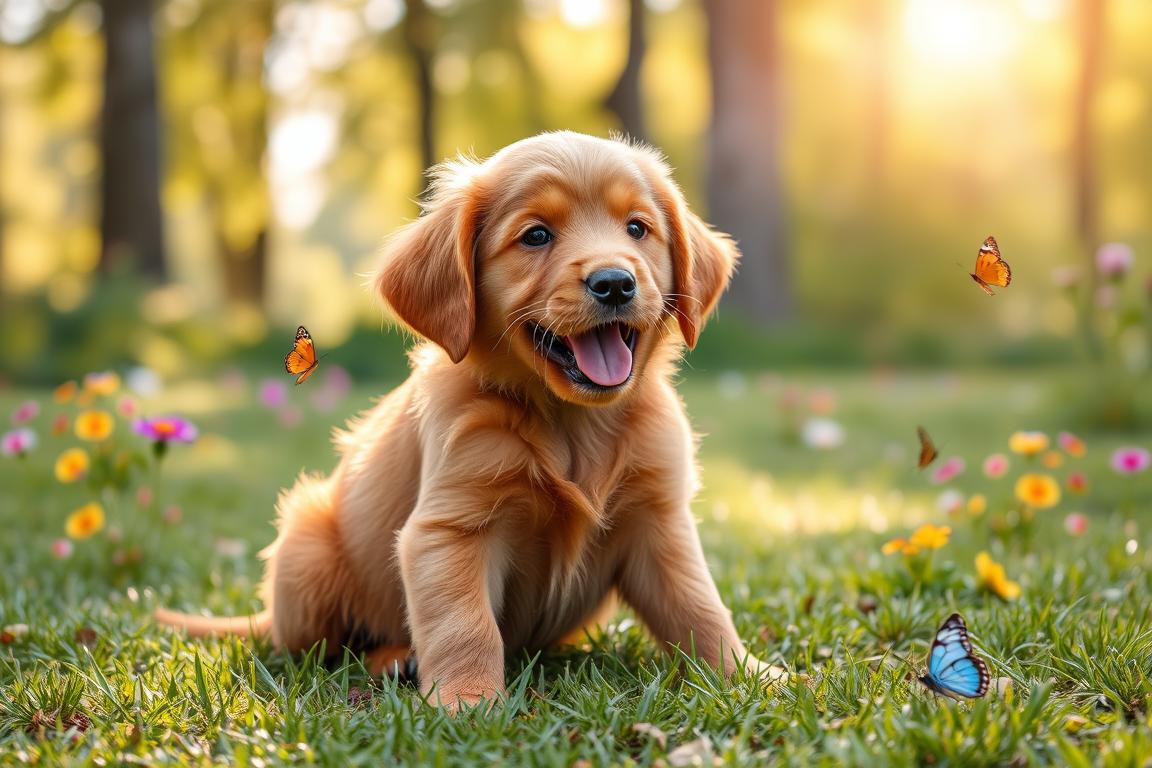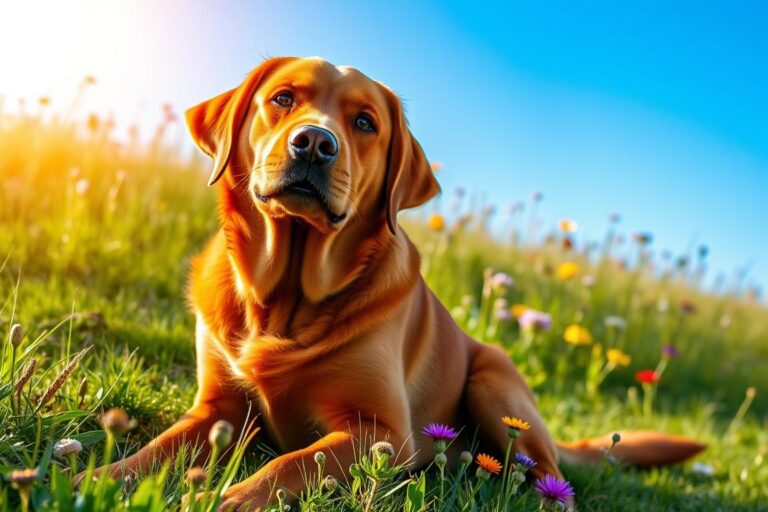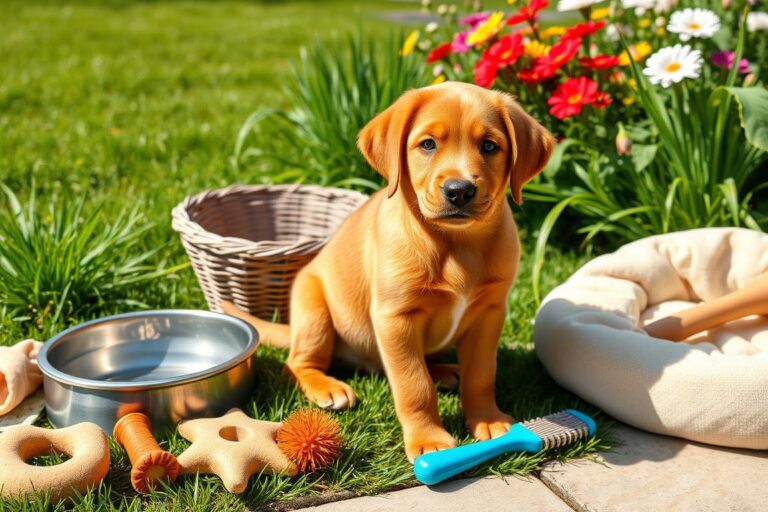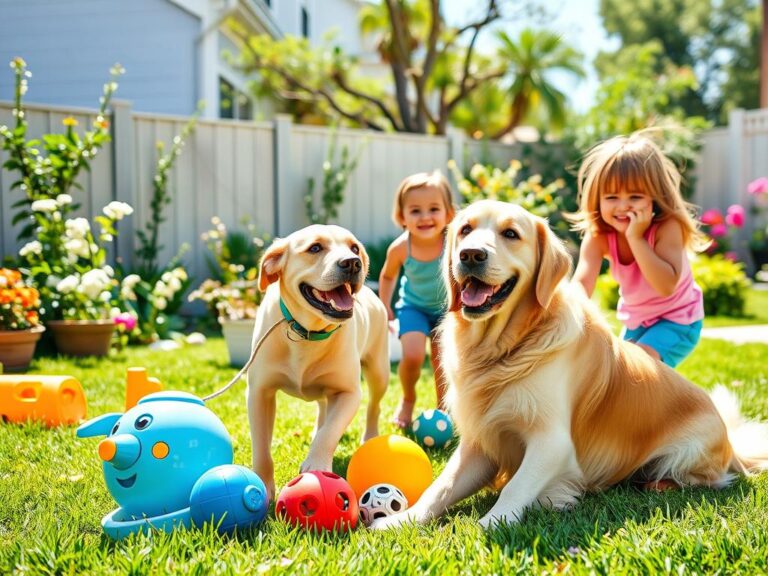Raising a Red Retriever Puppy: Essential Tips
Bringing a Red Retriever puppy into your home is an exciting and rewarding journey that lays the foundation for a lifelong friendship. These majestic dogs are known for their rich red coats and sociable, friendly natures, making them exceptional companions for families and individuals alike. In this article, you will discover essential tips that focus on responsible dog ownership, puppy training, and dog obedience to ensure your Red Retriever grows into a happy, well-behaved adult.
Whether you are a first-time pet owner or a seasoned dog lover, understanding the specific needs of your Red Retriever puppy is crucial. Early socialization and effective training techniques are fundamental to nurturing a confident and well-adjusted dog. Get ready to commit to a journey filled with love, learning, and joy as we explore everything you need to know to raise a thriving Red Retriever puppy!
Understanding the Red Retriever Breed
The Red Retriever breed, recognized as a striking variation of the Golden Retriever, boasts a rich history and remarkable canine characteristics. Originating in the highlands of Scotland, these dogs were primarily bred for hunting, showcasing their working capability and intelligence. Over time, the distinct allure of their vibrant red coats has made them both rare and highly coveted among dog enthusiasts.
History and Characteristics
The history of the Red Retriever breed is intertwined with the evolution of the Golden Retriever as a whole. While standard golden retrievers come in various shades of golden, the red jacket stands out due to selective breeding. This unique color has made red golden retrievers comparatively rare. Their double coat not only enhances their beauty but provides insulation, allowing them to thrive in colder climates. Regular grooming becomes essential to maintain their lustrous coats and control shedding.
Temperament and Behavior
In terms of temperament, the Red Retriever breed is known for its loyalty, playfulness, and affectionate nature. These dogs generally exhibit energetic behavior, requiring daily exercise ranging from one to two hours. Their high energy levels make them perfect companions for active individuals or families. Being intelligent and food-motivated, Red Golden Retrievers respond exceptionally well to training, particularly through reward-based methods. Social by nature, they excel in environments where they receive plenty of love and mental stimulation.
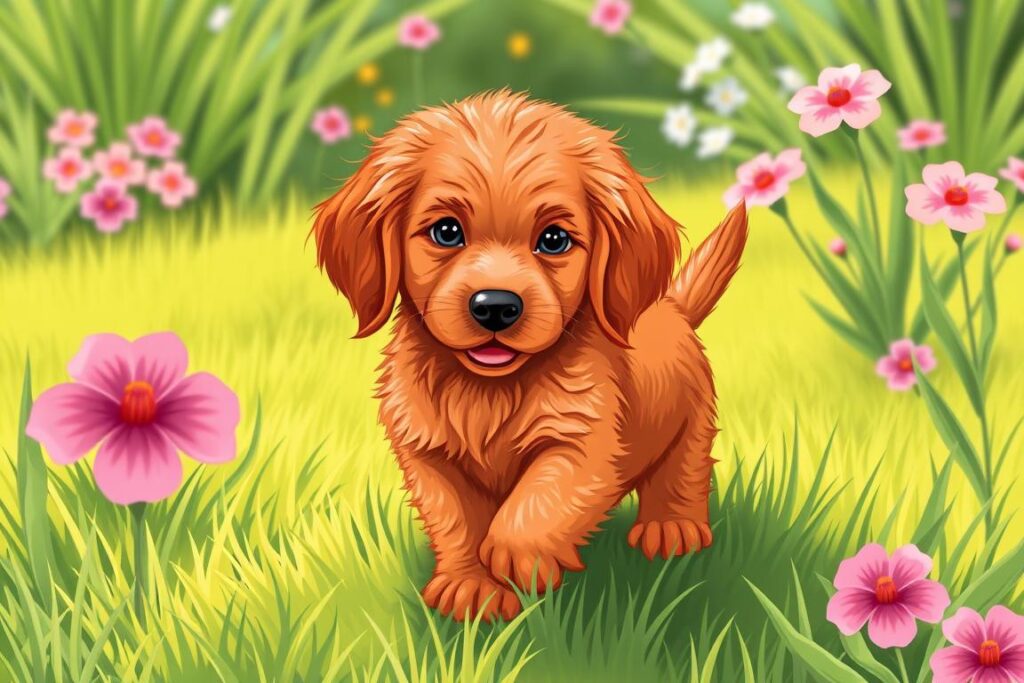
Preparing Your Home for a Puppy
Bringing a new Red Retriever puppy into your home requires thoughtful preparation. Puppy proofing ensures your space is safe, while gathering essential supplies creates a nurturing environment for your furry friend. By addressing both aspects, you can promote a healthy transition into your home.
Puppy-Proofing Your Space
Puppy proofing is crucial for keeping your new companion safe. Start by removing hazards such as exposed electrical cords, toxic plants, and small objects that a curious puppy may ingest. Designate a specific area for your puppy, using baby gates to limit access to certain rooms. Keep cleaning supplies and harmful substances out of reach. Regularly inspect your space for potential dangers to maintain a safe environment as your puppy grows.
Essential Supplies to Have
Equipping yourself with essential supplies will ease the demands of new puppy care. Gather the following items for a successful start:
| Essential Supplies | Purpose |
|---|---|
| Crate | Offers a safe space for training and security. |
| Food and Water Dishes | Needed for daily feeding and hydration. |
| Toys (e.g., Kong, Snuffle Mat) | Provide mental stimulation and alleviate teething discomfort. |
| Grooming Tools | Ensure a clean coat and maintain overall hygiene. |
| Leash and Collar | Necessary for walks and training sessions. |
| Pet Bed | Provides comfort and a designated resting place. |
| Fenced Yard or Leash | Ensures safe outdoor playtime and potty breaks. |
With proper puppy proofing and the right essential supplies, you create a solid foundation for your new puppy care routine. This preparation will contribute significantly to your puppy’s comfort and security in its new home.
Nutrition for a Healthy Start
Nourishing your puppy right lays the foundation for a healthy and active life. The first months are particularly critical, as proper puppy nutrition directly influences your dog’s growth and wellbeing. Selecting a high-quality puppy food that meets the unique needs of a Red Retriever is essential. This choice supports their development and fosters responsible dog ownership.
Choosing the Right Food
When selecting food for your Red Retriever puppy, look for options specifically formulated for large-breed puppies. These formulas provide the right balance of nutrients essential for healthy growth. Puppies need about twice as much energy, or calories, per pound of body weight compared to adult dogs of the same breed. Ensure that the chosen food contains the right proportions of protein, fat, carbohydrates, vitamins, and minerals to avoid nutritional deficiencies.
Portion Sizes and Feeding Schedule
Establishing a feeding schedule helps in maintaining your puppy’s ideal body condition. Puppies should be fed measured amounts of complete and balanced puppy food at each meal. Adjust portion sizes based on your puppy’s age, weight, and activity level to avoid overfeeding, which can lead to excessive weight gain and developmental issues. Treats can constitute no more than 10 percent of daily caloric intake.
| Age | Recommended Meals per Day | Portion Size (per meal) |
|---|---|---|
| 8-12 weeks | 4 | 1/2 cup |
| 3-6 months | 3 | 3/4 cup |
| 6-12 months | 2 | 1 cup |
Monitoring your puppy’s growth and adjusting the feeding schedule as necessary fosters a balanced development. Keep an eye on health indicators such as gum color, coat quality, and energy levels. Prompt adjustments to feeding and exercise can significantly enhance your puppy’s health, underscoring the importance of responsible dog ownership.
Socialization: Key to a Well-Adjusted Dog
Puppy socialization plays a critical role in the development of your Red Retriever. Socializing your puppy ensures they grow into a well-mannered and confident adult dog. From a young age, it’s essential to expose your puppy to various experiences, including different people and environments. This exposure helps shape their canine behavior, reducing the risk of anxiety and aggression as they grow. Taking the time to socialize your puppy will pay off in their ability to interact positively in both familiar and new situations.
Introducing Your Puppy to New People
When introducing puppies to new people, patience and gradual exposure are key. Begin in a controlled environment where your puppy feels secure. Invite friends or family members who are calm and dog-friendly. Allow your puppy to approach at their own pace, utilizing positive reinforcement, such as treats and praise, to create positive associations. By following this approach, you help your puppy learn appropriate social boundaries and decrease the chances of fear or aggression later on.
Exposing Your Puppy to Other Animals
Exposure to other animals, particularly dogs, is just as vital for puppy socialization. Arrange playdates with well-mannered dogs to encourage positive interactions. Keep these play sessions short and supervised, ensuring they’re filled with pleasant experiences. For older dogs, slow introductions to new environments and positive reinforcement can still enhance their social skills. Remember that the goal is to make each experience rewarding, which promotes healthy canine behavior.
| Socialization Activity | Age Range | Benefits |
|---|---|---|
| Meeting New People | 8-16 weeks | Builds confidence and reduces anxiety |
| Playing with Other Dogs | 8-16 weeks | Promotes healthy social skills |
| Visiting Various Environments | 8-16 weeks | Teaches adaptability and calmness |
| Trained Play Groups | 6 months and older | Encourages continued social growth |
Basic Training Techniques
Starting your puppy training journey at home is essential for a well-behaved Red Retriever. By keeping sessions short and engaging, you can maintain your puppy’s focus while teaching effective commands. Consistency in training is crucial for establishing trust and clarity in your puppy’s understanding of what is expected. This section will detail specific commands to teach early and emphasize the importance of a structured training approach.
Importance of Consistency
Consistency in training methods across all family members ensures that your puppy learns effectively. Repeating commands and using the same gestures helps your puppy connect the verbal cue with the desired action. As your puppy progresses, gradually increasing the criteria for training allows for additional complexity in commands like “sit,” “stay,” and “come.” This not only keeps your puppy mentally stimulated, but also solidifies learning through effective reinforcement.
Effective Commands to Teach Early
Teaching your Red Retriever essential commands early on fosters good behavior and obedience. Start with straightforward commands such as “sit” and “stay.” Keep training sessions short, around three to five minutes, and utilize positive reinforcement techniques, such as treats or praise, to motivate your puppy. Clicker training can be particularly beneficial, offering clear feedback that helps your puppy understand when they’ve performed correctly. Socialization should also be integrated within your puppy training regimen, exposing your puppy to various environments and situations to build confidence.
| Command | Purpose | Tips for Training |
|---|---|---|
| Sit | Teaches impulse control and helps during walks | Use treats to guide into position; reward immediately |
| Stay | Encourages patience and following directions | Start with short durations; gradually increase time |
| Come | Ensures safety and reliability off-leash | Use a cheerful voice and reward for returning |
Housebreaking Your Puppy
Housebreaking your Red Retriever is essential for a harmonious relationship between you and your puppy. Understanding the signs of needing to go is a fundamental part of puppy potty training. Observing your puppy’s behavior, such as sniffing around or circling, can help you anticipate when it’s time for a potty break. Implementing effective methods will allow you to successfully teach your puppy to relieve itself outside.
Signs Your Puppy Needs to Go
Recognizing the signs of needing to go can make housebreaking much easier. Puppies typically show specific behaviors just before they need to relieve themselves. Pay attention if your puppy starts to sniff excessively, circle, whine, or head towards the door. Understanding these signals enables you to provide timely bathroom breaks, reducing accidents indoors.
Effective Housebreaking Methods
Using a crate for housebreaking is one of the most effective methods, as puppies naturally avoid soiling their living space. Establishing a consistent routine is crucial; take your puppy out once every hour, and immediately after meals, naps, or playtime. Puppies can usually hold their bladders for a number of hours corresponding to their age in months, plus one. For example, a three-month-old puppy can hold it for about four hours.
Reinforcement through positive rewards, such as treats, praise, or playtime, encourages good behavior. Puppies should be rewarded immediately after pottying outside. If accidents happen, clean them up promptly with enzyme-based cleaners to eliminate odors, discouraging repeat incidents in the same spot.
Be prepared to troubleshoot common housebreaking problems with the help of a vet or professional trainer if necessary. Every puppy learns at its own pace; consistency and patience will lead to successful housebreaking.
Health Care Essentials
Ensuring optimal puppy health care is vital for your Red Retriever. Regular vet checkups play an important role in early detection of any health issues, while establishing a comprehensive vaccination schedule protects against serious diseases. These proactive measures help ensure your puppy grows into a healthy adult dog.
Regular Vet Checkups
Regular vet checkups ensure your puppy’s well-being throughout its formative years. Your veterinarian can provide tailored advice specific to the needs of the Red Retriever breed. These visits allow for ongoing assessments of growth, weight, and overall health, which are essential for preventing medical issues later on.
Vaccination Schedule
Following a vaccination schedule is crucial in protecting your Red Retriever from various diseases. The schedule typically includes essential vaccinations during puppyhood, which your vet will determine based on guidelines for the breed and local regulations. Keeping track of these vaccinations promotes long-term health for your furry companion.
| Age | Vaccine | Purpose |
|---|---|---|
| 6-8 weeks | DAP (Distemper, Adenovirus, Parvovirus) | Protects against common serious diseases. |
| 10-12 weeks | Parvovirus | Reinforces immunity against parvovirus. |
| 12-16 weeks | Rabies | Protection against rabies, mandatory in many areas. |
| Annual | Booster shots | Maintains immunity levels throughout life. |
Grooming Your Red Retriever
Grooming your Red Retriever is an essential part of maintaining their health and comfort. Regular grooming helps keep their coat in top condition and prevents various health issues. Follow these effective grooming tips to ensure your Red Retriever looks and feels their best.
Bathing and Brushing Tips
Bathing and brushing are crucial aspects of Red Retriever care. The breed sheds moderately throughout the year and heavily at least once or twice annually, making regular brushing indispensable. For dogs experiencing heavy shedding, daily brushing is recommended. For regular shedding, weekly brushing is sufficient. When bathing your pup, aim for monthly sessions, and be sure to use a gentle dog shampoo to maintain coat health.
| Grooming Activity | Frequency | Notes |
|---|---|---|
| Brushing | Daily (heavy shedding) | Avoid bristle brushes; use slicker brushes instead. |
| Bathing | Monthly | Use a gentle dog shampoo for best results. |
| Nail Trimming | Monthly | Keep nails short to avoid snagging. |
Caring for Ears and Teeth
In addition to bathing and brushing, proper ear and dental care is essential for your Red Retriever. Inspect your pup’s ears weekly for any debris or signs of infection, particularly if they enjoy swimming. For dental health, brush your dog’s teeth at least three times a week to reduce the risk of tooth decay. Establishing a consistent grooming routine will enhance your dog’s hygiene and overall well-being.
Exercise and Playtime Needs
As an energetic breed, Red Retrievers thrive on regular exercise and play. Ensuring that your puppy meets its daily activity requirements not only supports physical health but also provides mental stimulation crucial for their overall well-being. A combination of structured exercise for puppies and engaging playtime activities will help to develop a well-adjusted adult dog.
Daily Activity Requirements
The amount of exercise a red retriever puppy needs varies based on age and breed. For these puppies, the general guideline is that they should have two exercise sessions a day, with the duration being five minutes for each month of their age. For instance, a five-month-old puppy would require two separate 25-minute exercise sessions. Walking your puppy can be done once or twice daily, adhering to the same timing rule. Overextending these exercise limits could lead to joint damage or hinder growth, so it’s essential to adhere to these recommendations.
Fun Games for Your Puppy
In addition to formal exercise, incorporating daily play activities satisfies your puppy’s playtime needs and fosters bonding. Engaging in simple games like fetch or tug-of-war can be both enjoyable and stimulating. Consider using mentally stimulating toys that can challenge your puppy and keep them occupied. The AKC S.T.A.R. Puppy Program emphasizes socialization and training which contribute positively to your puppy’s behavior and can form a strong foundation for their development. Balance between physical activity and mental challenges prevents destructive behaviors while promoting longevity and a healthy lifestyle.
Building a Bond with Your Puppy
Creating a strong connection with your Red Retriever puppy is essential for both effective training and a long-lasting relationship. By engaging in quality time activities, you can foster this bond and enhance your understanding of your puppy’s needs. Playtime, training sessions, and affectionate moments are all crucial in developing trust and companionship. When you prioritize interaction, you pave the way for a positive friendship that builds the foundation for responsible dog ownership.
Quality Time Activities
Games and training provide excellent opportunities to spend quality time with your pet. Structured play sessions not only help with energy release but also teach your puppy essential skills while deepening your bond. Research indicates that puppies who have regular, interactive playtime with their owners exhibit more reliable house training behaviors. Engaging activities will ensure your puppy feels secure and loved, making them more receptive to learning.
Understanding Your Puppy’s Needs
Recognizing and addressing your puppy’s needs is key in building a lasting connection. This includes maintaining a consistent routine for feeding, potty breaks, and playful interaction. Puppies thrive on structure, and establishing a reliable schedule can dramatically improve their behavior and comfort levels. As you learn to interpret your puppy’s body language and cues, you’ll find it easier to meet their emotional and physical needs, further strengthening your bond over time.

